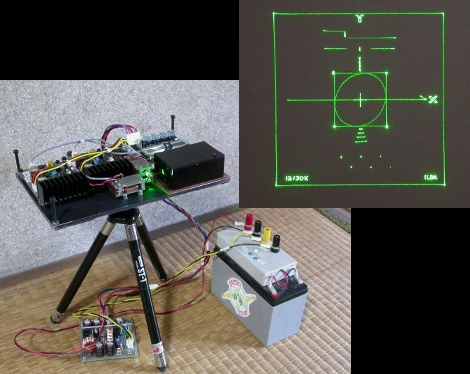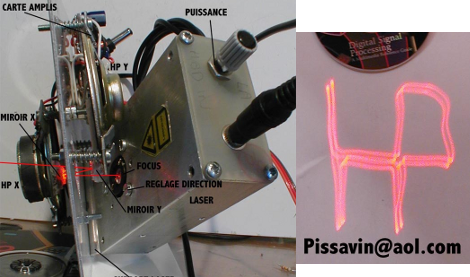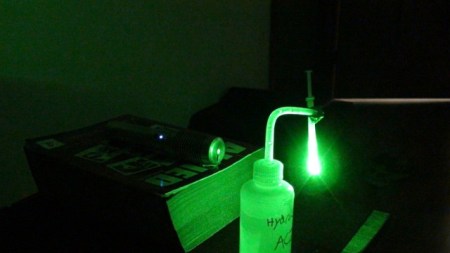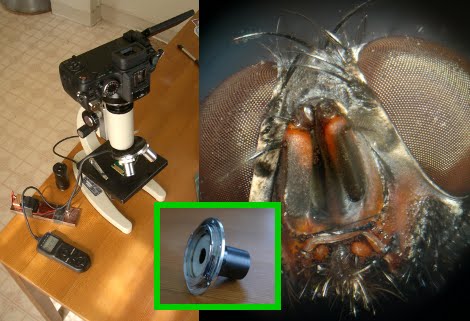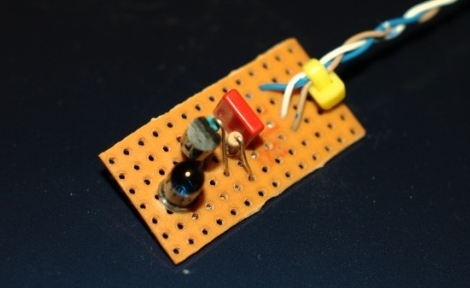
[Jkx] was using a Thomson VS360U video transmitter to make a wireless connection between a cable box and his television. The system using an RF remote, but relies on an IR transmitter to communicate between the base station and the cable box. He found the IR module that comes with the device is under-powered and set out to fix the situation. Using a scope he found the pin that drives the IR LED. The board above contains a boost circuit that patches into voltage and ground, using the pin he sniffed out to control the base of a transistor. Now the device has enough power to reliably control the cable box.

